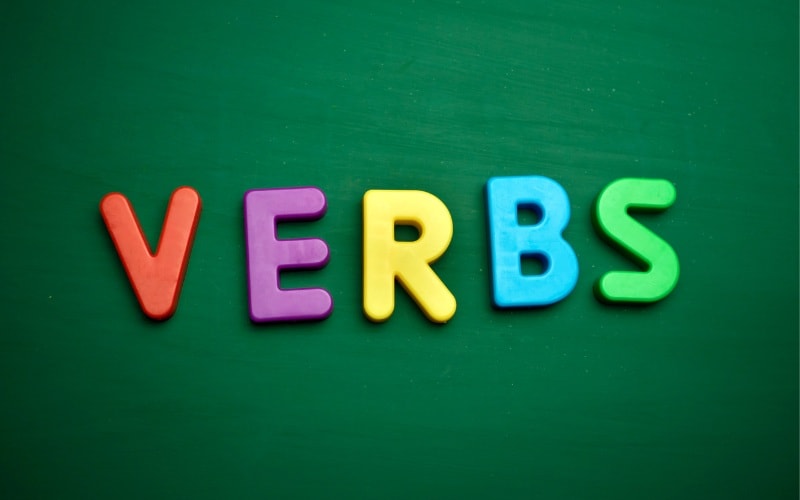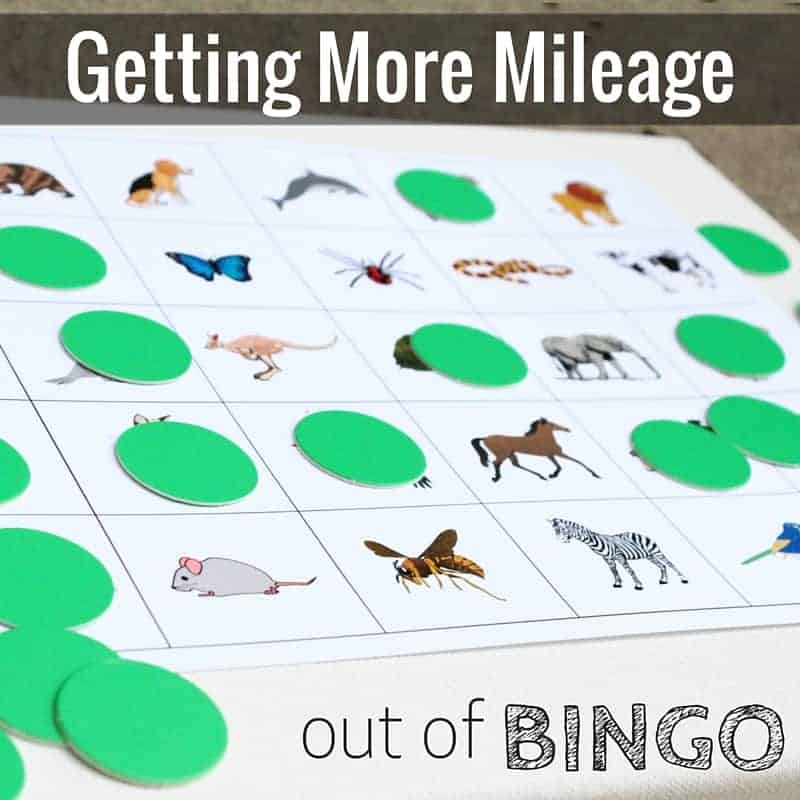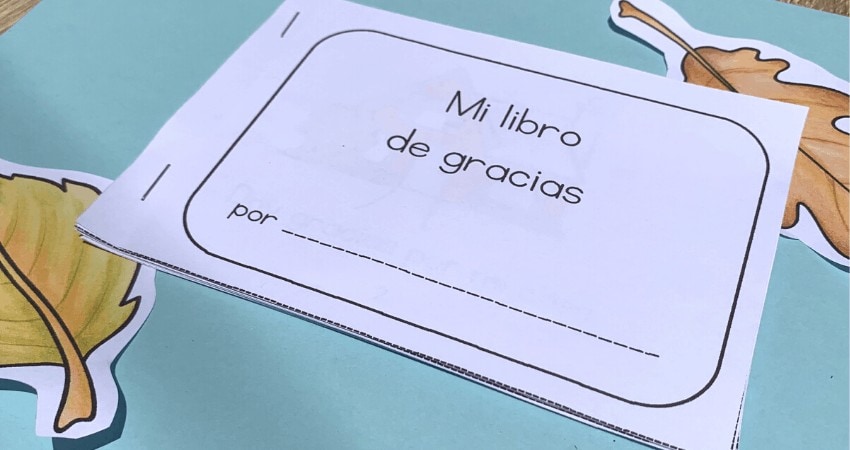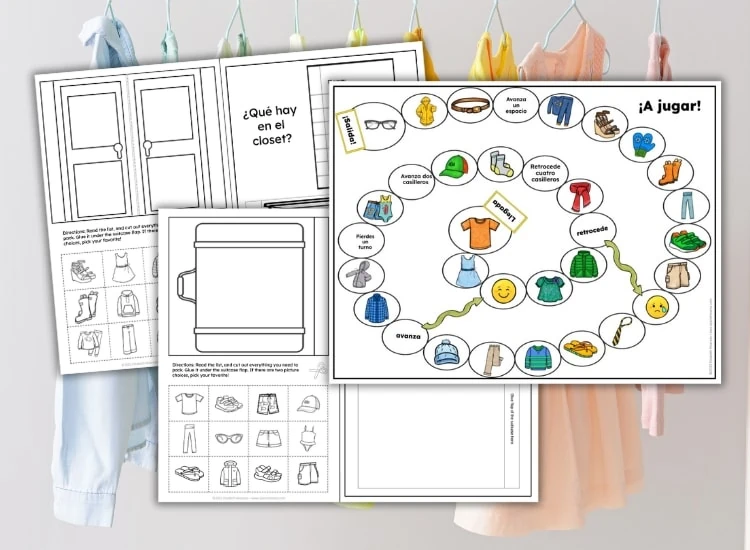The Super Siete Verbs in Spanish
Inside: What the super siete verbs in Spanish are, with free printable posters.
High-frequency verbs are fundamental to learning any new language. Spanish students need constant interaction with the highest-frequency words (and these aren’t just verbs: think to, from, for, etc.)
The super seven verbs are a great place to start. Not only are they high-frequency words: with them, even beginner students can create stories and express basic needs.
Here are the super siete in Spanish, in the third person:
1. es (is)
2. está (is – location or feeling)
3. tiene (has)
4. hay (there is/are)
5. le gusta (likes)
6. va a (goes to)
7. quiere (wants)
Contents:
1. What are the super siete verbs?
2. How did we come up with them?
3. Free printable posters of the Super 7 / Sweet Sixteen Verbs
4. How can I use them in my classroom?
5. What are the sweet sixteen verbs?
What Are The Super 7 Verbs in Spanish?
When people refer “the super siete” in the Spanish language, they mean these seven verbs:
- Ser: to be
- Estar: to be
- Tener: to have
- Hay: there is/are
- Gustar: to like
- Ir: to go
- Querer: to want
Just using those seven verbs, you can express very core concepts:
- Identity
- Location or Feeling
- Possession
- Existence
- Preference
- Motion
- Desire
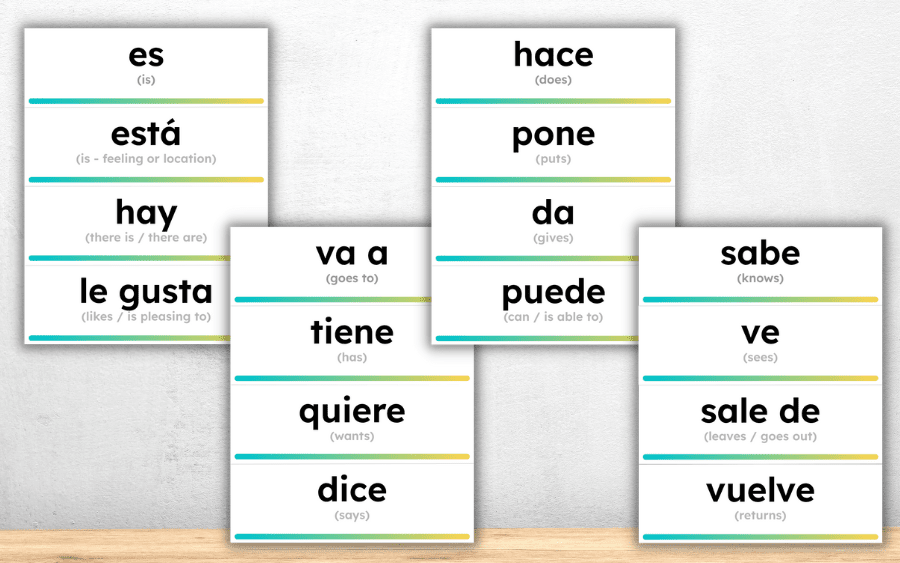
How Did We Come Up With Them?
The “Super 7 verbs” aren’t actually lifted directly from a list of high-frequency words across all language. (In Spanish, although all rank in the top 100, there are some other verbs that rank higher in frequency.)
Rather, they were chosen because they immediately allow the speaker flexibility in expressing a wide range of actions.
Terry Waltz was the originator of identifying these core seven verbs. She said,
“I got to thinking that in writing simple readers, quite often complex actions got broken down to a subset of very basic concepts, too. So I tried to make a list, and came up with the Super Seven.”
Bryce Hedstrom came up with an expanded list, the Sweet Sixteen Verbs. The number of verbs, of course, isn’t the point: it’s just identify what input your students need, to express as much as possible.
With the movement to embrace comprehensible input, many language teachers began to recognize that high-frequency vocabulary is vital.
Traditional textbooks have often chosen a theme (say, school) and have students memorize words related to that. The problem, of course, is that students quickly forget words they learn void of context. It also means you may have beginners studying the word pencil sharpener, months before they can say “I like…”
By focusing on high-frequency verbs, Spanish students can quickly express basic needs, wants, and identity. This helps both teachers and students stay in the target language (Spanish) without stopping often to translate.
It also means that teachers can use high-interest techniques like Special Person Interviews, Storytelling, Movie Talk, and more, right away. (More on those below!)
Free Printable Super Siete Verb Posters
Would you like to have some posters to put up in your classroom? I’ve got some free ones here for you. They are editable and include present, preterite, and imperfect tenses (all in the third person).
If you don’t like the design, in Google slides you can replace the background to just be white. If you don’t like my wording or translations, you can change those too!
What Are The Sweet Sixteen Verbs in Spanish?
The sweet sixteen is a more complete list that some teachers use. If students know these, they really are set up to comprehend and speak, even as beginners.
I’m going to list them in the third person:
1. es (is)
2. está (is – location or feeling)
3. tiene (has)
4. hay (there is/are)
5. le gusta (likes)
6. va a (goes to)
7. quiere (wants)
8. hace (does)
9. pone (puts)
10. dice (says)
11. da (gives)
12. puede (is able to)
13. sabe (knows)
14. ve (sees)
15. sale de (leaves/ goes out))
16. vuelve (returns)
How Can I Use Them in My Classroom?
The idea is not to hand these out in a list and quiz your students on them!
Rather, we know our students will need these words and frequently come across them. So, these different verbs are a great place to start in centering your units.
If you are new to comprehensible input, I recommend reading up on that first. Here are my favorite ways to incorporate the Sweet Sixteen into the Spanish classroom:
1. Persona Especial
This is a personalized, high-interest way to start off the year and get to know your students, developed by Bryce Hedstrom.
It’s essentially a series of interviews that the teacher does with individual students, in front of the whole class. The idea is to find out more about that student and get to know them, while staying in the target language and keeping it comprehensible. This follows the idea of centering your lesson plans on your students, making them your Spanish curriculum.
Most teachers incorporate common questions like name, age, interests, hobbies, talents, some home life details, future goals and dreams, and favorites.
Learn More in this blog post: Special Person Interviews 101
2. Storytelling/Storyasking
TPRS (Teaching Proficiency through Reading and Storytelling) is a foreign language teaching method that was developed by Blaine Ray in the 1990s. It’s based on the idea that students acquire language best through interactive and personalized comprehensible input.
The method uses storytelling to build a narrative in the target language, based on interaction between the teacher and students. This is usually through 3 main steps:
1. Introduce New Vocabulary
2. Co-create a Story
3. Write and Read the Story
Learn More: TPRS Storytelling 101
3. Games
Games create a lot of natural interaction, which I love. Even some simple games like “I have/who has,” Go Fish, and Bingo naturally use them. I have lots of blog posts on fun games that provide great input and a relaxed atmosphere for speaking, if you want plenty of ideas.
4. Movie Talk
This is somewhat similar to storytelling, just based on a short film or video clip. It usually has these three steps:
- The teacher chooses a film that will be interesting to his/her students.
- The teacher previews the film, and prepares how to show and use it.
- The teacher shows the film in class, playing segments and pausing to narrate the action in comprehensible language.
Learn more: Movie Talk 101
5. Authentic Music
My Spanish classes have really loved music in the classroom. Since all of the verbs listed here are high-frequency, they naturally show up in authentic Spanish resources too!
Unless you are using something like Señor Wooly songs (which are great), most authentic songs won’t be comprehensible. One of my favorite strategies, though, is to focus in on just on a few phrases or verbs that get repeated often (the song Soy yo, for example).
Learn more: 30 Authentic Songs for Beginning Spanish Students
One last thing: I also found this post from Mike Peto a helpful commentary on the role of high-frequency verbs.
Hope this helps!
